Valley Forge Asbestos Release Site (National Park Service)
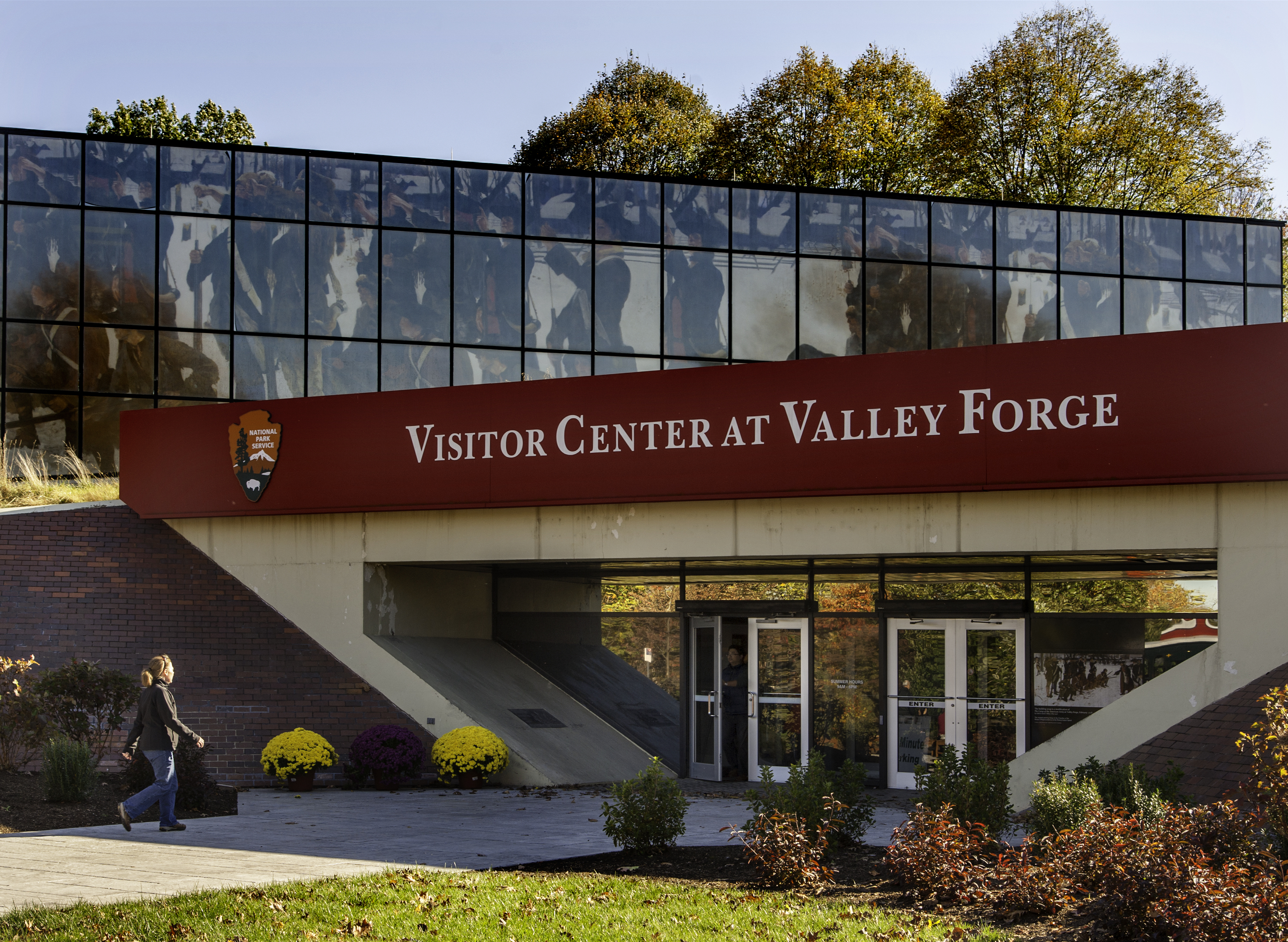
Congratulations to the National Park Service and the Department of the Interior for winning the 2020 Federal Facility Excellence in Site Reuse Award! EPA presented the award, recognizing the successful cleanup and restoration of the Valley Forge Asbestos Release Site, in a September 16, 2020 virtual ceremony. This is a national award that recognizes innovative thinking and cooperation among federal agencies, states, tribes, local partners, and developers that led to noteworthy restoration and reuse of contaminated sites on federal lands.
Photo Source: National Park Service
(1 of 11)
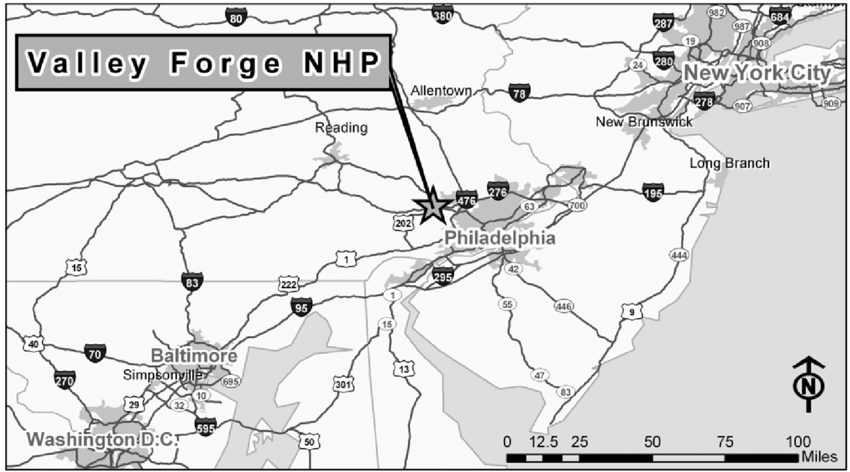
Photo Source: Research Gate
(2 of 11)

National Memorial Arch
Valley Forge National Historical Park preserves lands used by the Continental Army for its 1777-1778 winter encampment during the American Revolutionary War. The park contains historical buildings, landscapes, memorials and museums which interpret the history of the area.
Photo Source: National Park Service
(3 of 11)
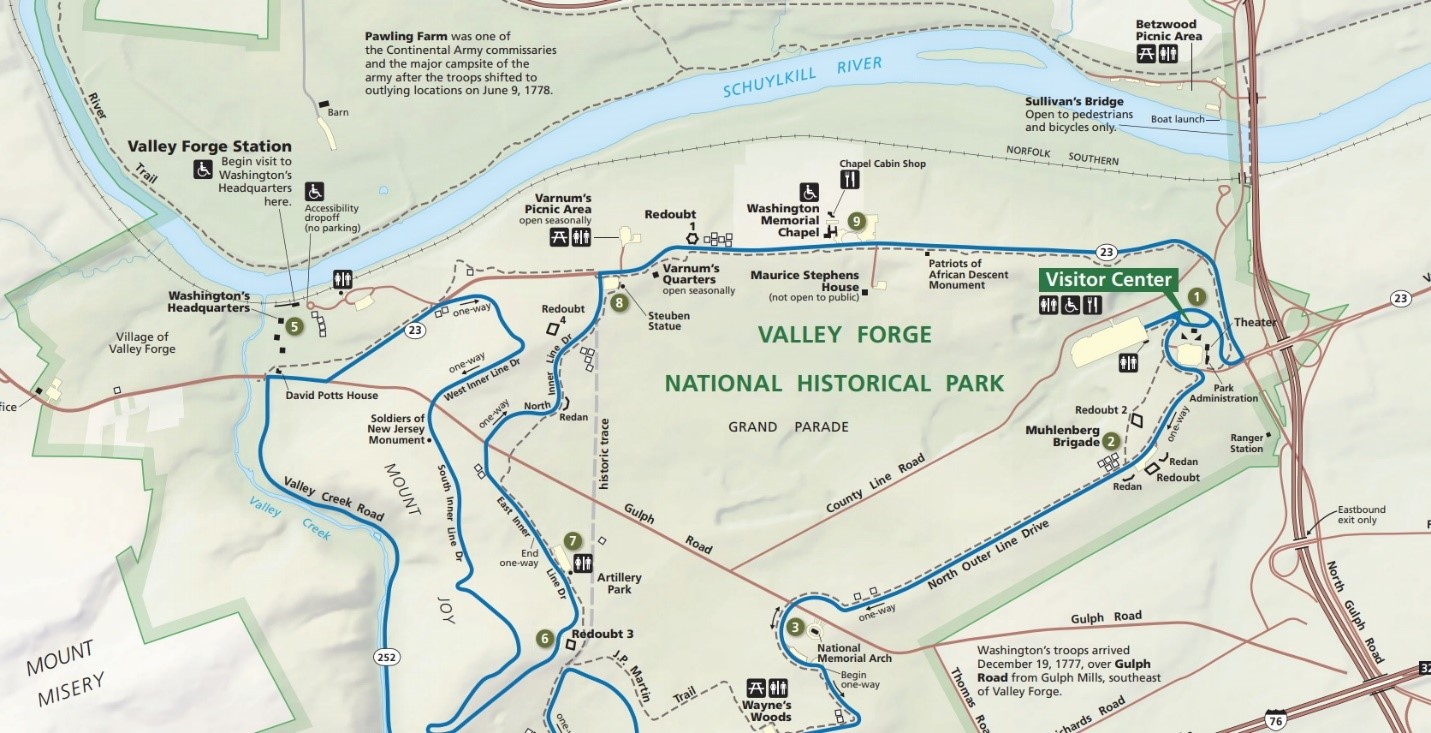
The park encompasses the limestone quarries and production facilities which were located along County Line Road, south of the Schuylkill River. These facilities stood near the site of George Washington’s historic winter headquarters during the Revolutionary War.
Photo Source: National Park Service
(4 of 11)
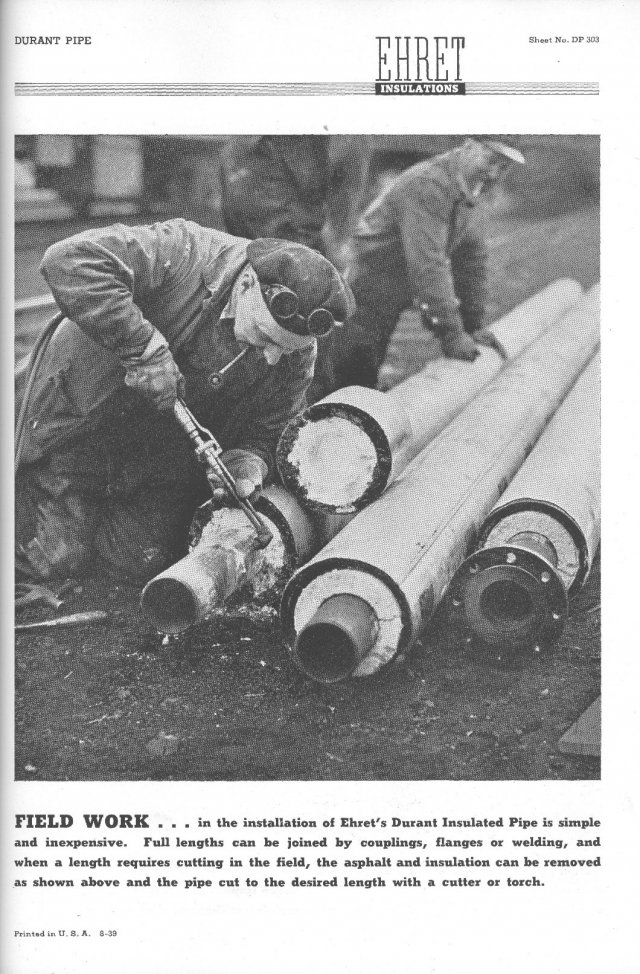
During the late 1800s, Ehret Magnesia Company, later Baldwin-Ehret-Hill and Keene Manufacturing, purchased many of the limestone quarries in the area. Magnesium carbonate was extracted from these quarries and combined with asbestos imported from Canada to manufacture asbestos-containing insulation products.
Photo Source: Flickr
(5 of 11)
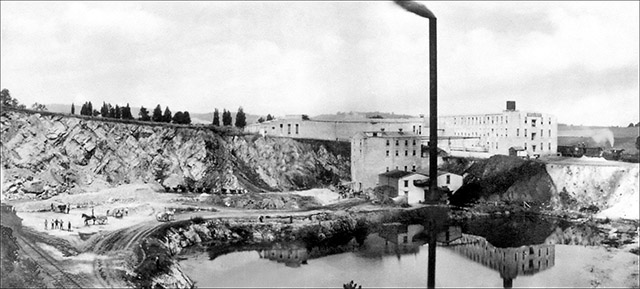
The Ehret Magnesia Manufacturing Company
The manufacturing process created an asbestos-containing waste slurry. The Ehret Magnesia Company disposed of the slurry by pumping it into quarries or directing it to a natural drainage swale that flowed into an unnamed tributary of the Schuylkill River. The quarries were filled with waste slurry and eventually covered with soil or asphalt.
Photo Source: National Park Service
(6 of 11)
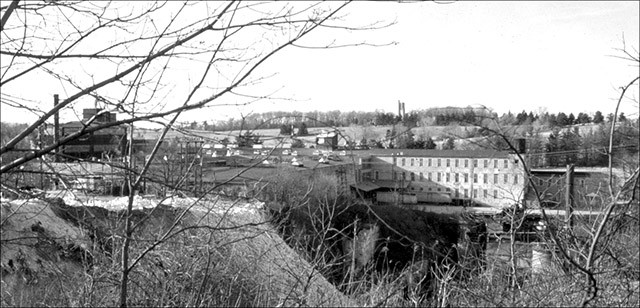
The Keene quarry and magnesia plant, 1974
The Baldwin-Ehret-Hill company was acquired by Keene Corporation in 1968. Keene did not manufacture asbestos-containing materials at the plant, but did continue to sell the products. The Keene plant closed in the early 1970s and the Valley Forge National Historical Park was established on October 13, 1976. By the late 1970s, the Commonwealth of Pennsylvania and National Park Service had removed all visible signs of the former manufacturing facility, including the buildings and exposed piles of waste.
Photo Source: The Tredyffrin Easttown Historical Society
(7 of 11)
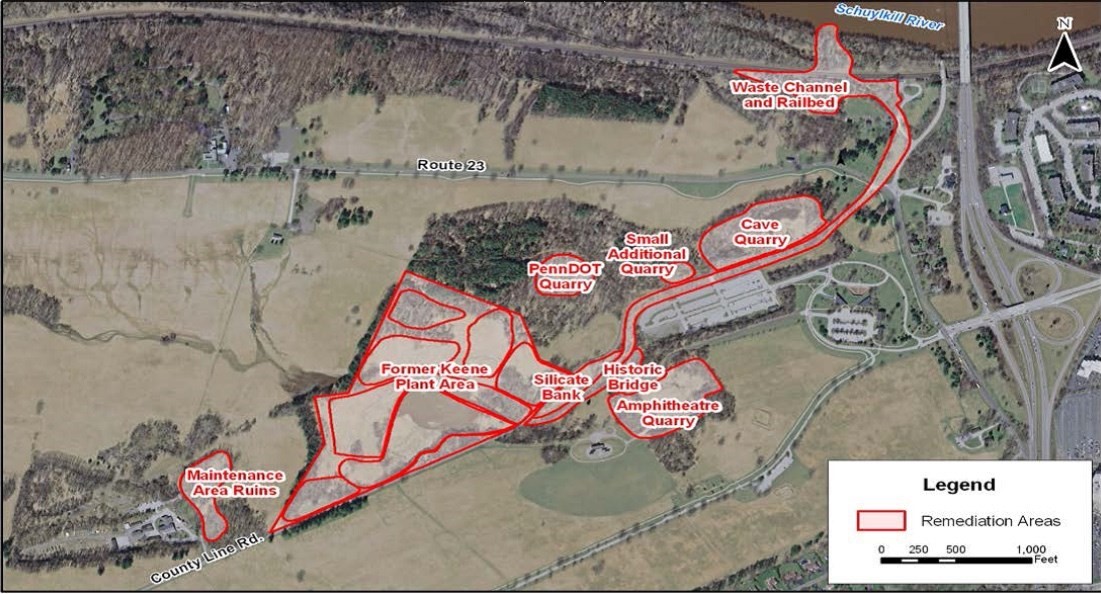
The National Park Service discovered buried asbestos-containing slurry during the installation of fiber optic lines across a former quarry in 1997. In partnership with the Environmental Protection Agency, NPS developed and implemented an initial response plan. They selected short-term and long-term cleanup goals under provisions of the Comprehensive Environmental Response, Compensation, and Liability Act (CERCLA). Short-term activities included removing asbestos-contaminated materials that posed an immediate threat, covering deeper areas of slurry with soil and installing barriers to prevent public access to potentially contaminated areas, including large areas of the Grand Parade.
Photo Source: National Park Service
(8 of 11)
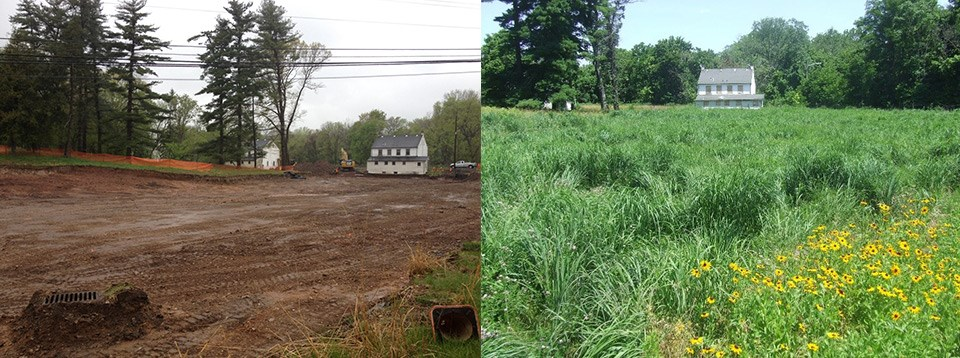
In spring 2010, the U.S. Government and the Commonwealth of Pennsylvania reached an agreement to dedicate funds for the site’s cleanup to National Park Service standards. The National Park Service designed specific remedial steps to be taken to clean up the site and began to implement the remedy in 2013. As each area defined in the remedial design was addressed, the National Park Service collected samples to ensure all contamination located within the top two feet of soil had been removed. Results from the analysis of these samples indicated additional areas of contamination which were not previously identified. By fall 2017, all contamination identified at the site was removed and the National Park Service began monitoring the vegetation planted in the formerly contaminated areas to ensure these plantings achieved the revegetation standards outlined in the site’s Record of Decision. The final cleanup cost was approximately $22 million, 60% of which was paid by the Commonwealth and 40% by the Federal Government’s Judgment Fund. Previous National Park Service cost recovery efforts also contributed $500,000 to site cleanup costs.
Photo Source: National Park Service
(9 of 11)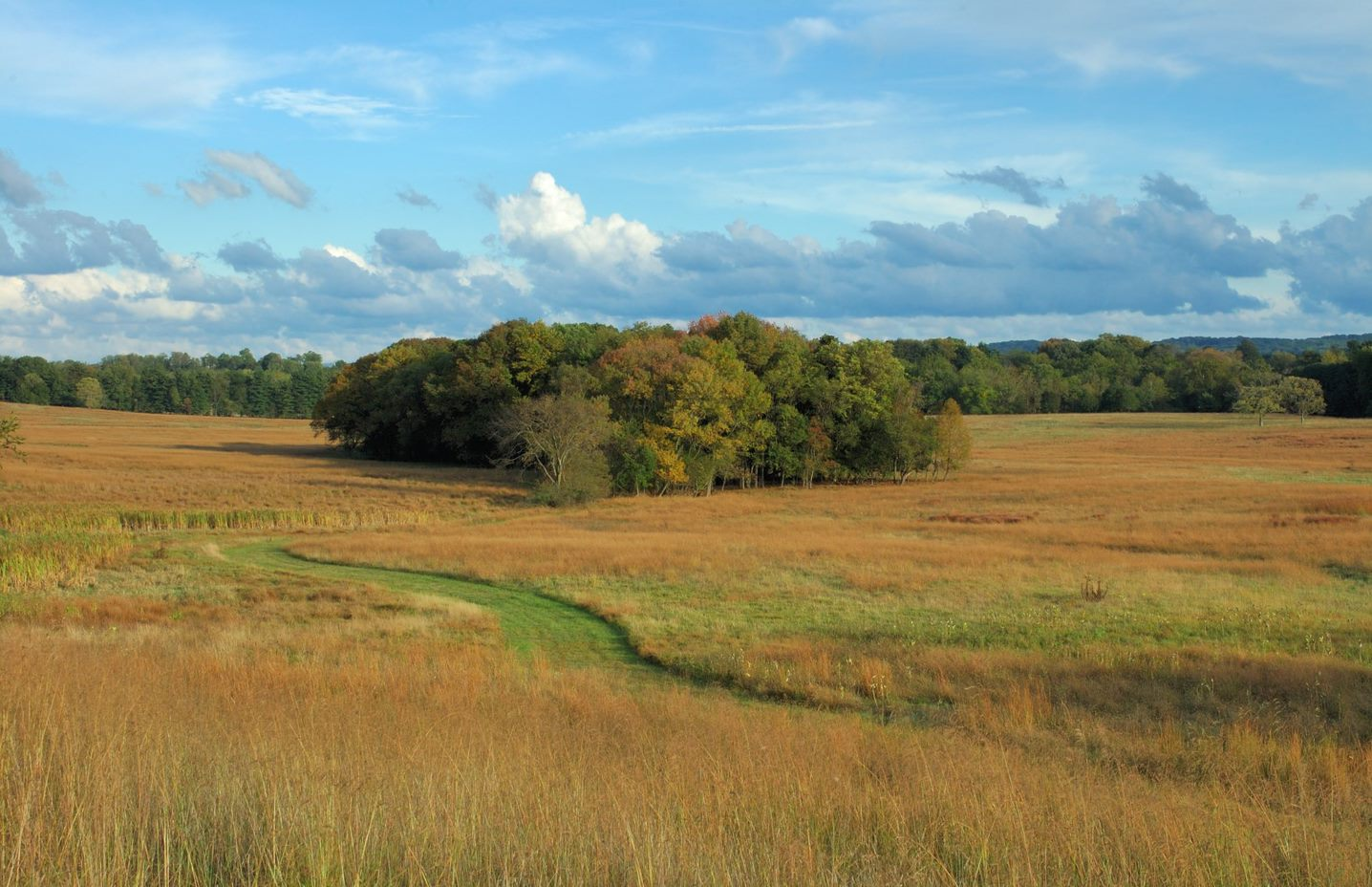
Grand Parade Field
In spring 2020, the National Park Service determined that all areas of the Asbestos Release Site had achieved the vegetation standards and the entire site was reopened for public use. The reopening of the areas allows the National Park Service to fully develop interpretative opportunities for visitors, including the Grand Parade – one of the most historic features of Valley Forge. Cleanup of the site also enhanced recreational opportunities, including hiking, bicycling, horseback riding and wildlife watching. The cleanup triggered the construction of Sullivan’s Bridge, connecting two areas of Valley Forge split by the Schuylkill River and providing a critical link in a vast regional trail network.
Photo Source: National Park Service
(10 of 11)
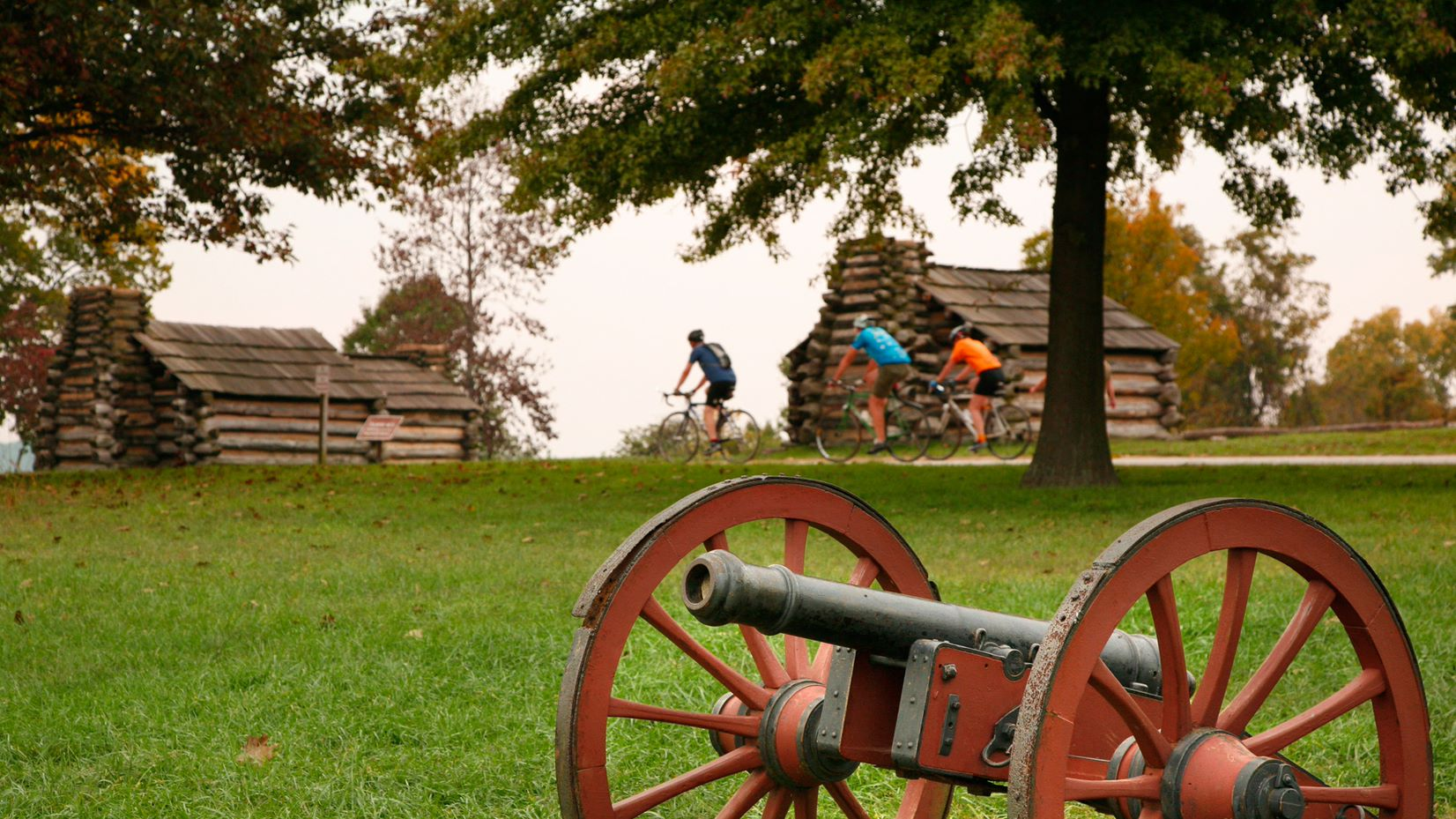
As the premier tourist destination in Montgomery County, Pennsylvania, the Valley Forge National Historical Park has a significant impact to the local economy. Returning the site’s 112 acres to beneficial use ensures that the National Park Service can manage Valley Forge in a manner that allows for development of historical and recreational opportunities for the enjoyment of current and future users of the park. As a result, the park retains its significance as a destination with substantial positive impact on the local economy. The EPA has recognized this work by presenting the National Park Service and the Department of the Interior with the 2020 Federal Facility Excellence in Site Reuse Award.
Photo Source: National Park Service
(11 of 11)
